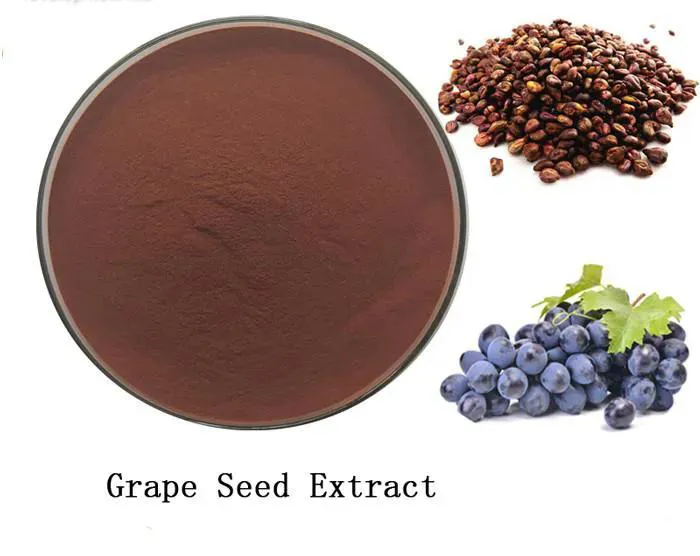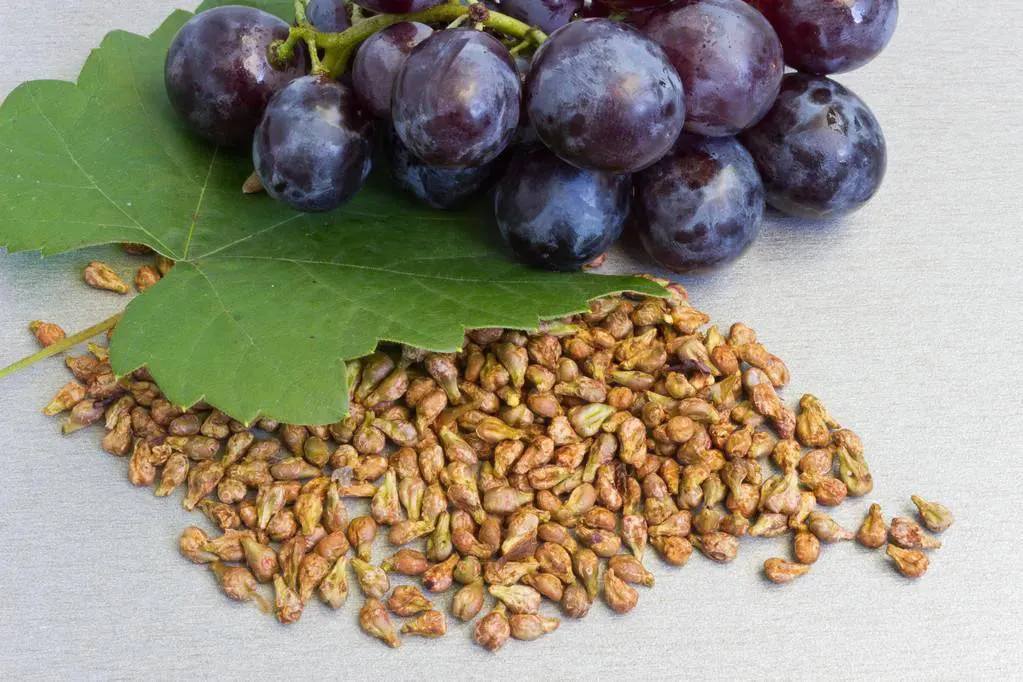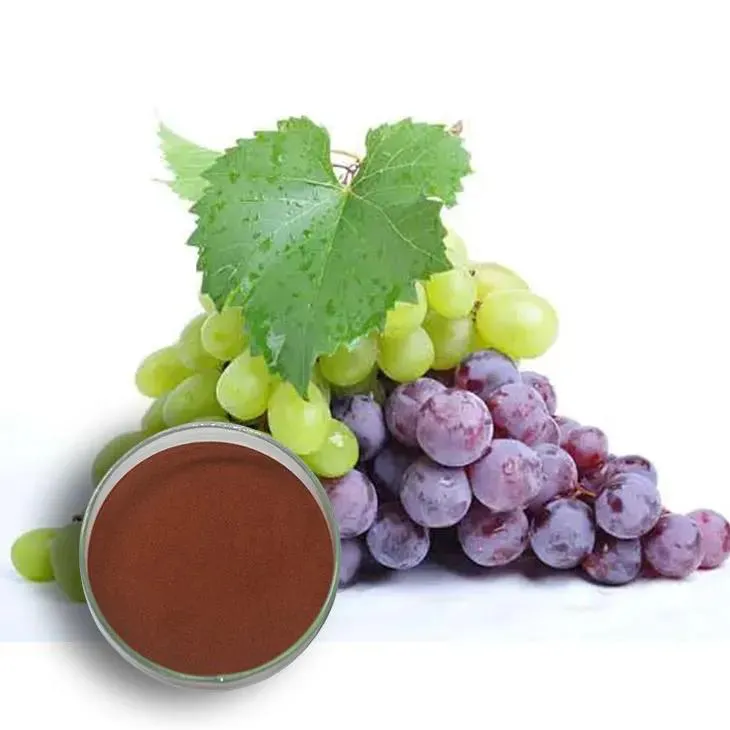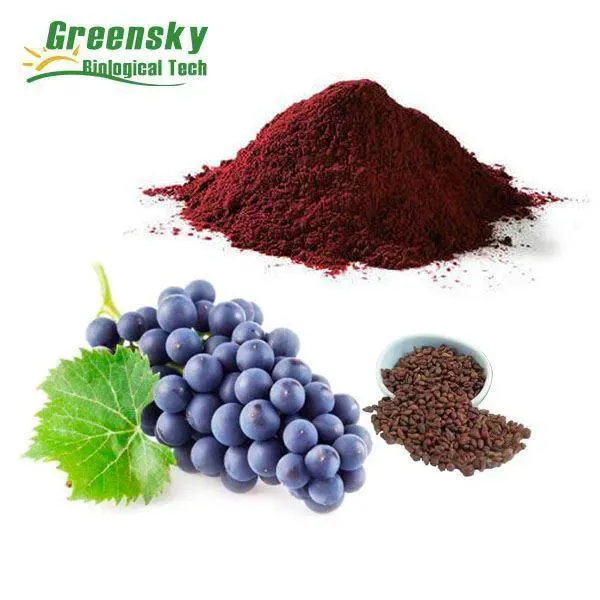- 0086-571-85302990
- sales@greenskybio.com
Nutrition Uncovered: Health Benefits of Grape Seed Extract for the Modern Consumer
2024-08-08

Introduction
In today's health - conscious world, consumers are constantly on the lookout for natural supplements that can enhance their well - being. One such supplement that has been gaining significant popularity is Grape Seed Extract. Derived from the seeds of grapes, this natural substance is rich in bioactive compounds that offer a plethora of health benefits. This article will explore in detail the various ways in which Grape Seed Extract can contribute to the health of the modern consumer.

Antioxidant Powerhouse
Grape Seed Extract is a potent source of antioxidants. Antioxidants play a crucial role in the body by combating oxidative stress. Oxidative stress occurs when there is an imbalance between the production of free radicals and the body's ability to neutralize them. Free radicals are highly reactive molecules that can damage cells, proteins, and DNA, leading to various health problems such as premature aging, heart disease, and cancer.
The antioxidants present in grape seed extract, such as proanthocyanidins, are highly effective in scavenging free radicals. Proanthocyanidins are a class of flavonoids that are known for their antioxidant properties. They are more powerful than vitamin C and vitamin E in neutralizing free radicals. By reducing oxidative stress, grape seed extract can help protect the body from a wide range of diseases and promote overall health.

Benefits for the Immune System
Another significant benefit of grape seed extract is its positive impact on the immune system. A strong immune system is essential for the body to defend itself against pathogens such as bacteria, viruses, and fungi.
Grape seed extract can strengthen the immune system in several ways. Firstly, its antioxidant properties help protect immune cells from oxidative damage. Immune cells are constantly exposed to free radicals during the process of fighting off infections. By neutralizing these free radicals, grape seed extract can ensure that immune cells function optimally.
Secondly, grape seed extract has been shown to enhance the production of certain immune - related molecules, such as cytokines. Cytokines are signaling molecules that play a crucial role in regulating the immune response. By increasing cytokine production, grape seed extract can help the body mount a more effective immune response against infections.

Implications for Eye Health
Eye health is an area of increasing concern, especially in the modern digital age where people spend long hours staring at screens. Grape seed extract has shown potential in reducing the risk of certain eye diseases.
One of the main causes of eye diseases such as macular degeneration and cataracts is oxidative damage to the eye tissues. The antioxidants in grape seed extract can help protect the eyes from this damage. Proanthocyanidins, in particular, can cross the blood - eye barrier and reach the tissues of the eye, where they can neutralize free radicals and reduce oxidative stress.
Moreover, grape seed extract may also have a role in improving blood circulation in the eyes. Good blood circulation is essential for delivering nutrients and oxygen to the eye tissues and removing waste products. By improving blood circulation, grape seed extract can help maintain the health of the eyes.

Role in Regulating Blood Sugar Levels
For those at risk of diabetes or already suffering from the condition, regulating blood sugar levels is of utmost importance. Grape seed extract may play a beneficial role in this regard.
Studies have suggested that grape seed extract can improve insulin sensitivity. Insulin is a hormone that plays a key role in regulating blood sugar levels. When the body becomes insulin - resistant, it is unable to effectively use insulin to transport glucose from the blood into cells, leading to high blood sugar levels. By improving insulin sensitivity, grape seed extract can help the body better regulate blood sugar levels.
Furthermore, grape seed extract may also have an effect on carbohydrate metabolism. It can inhibit certain enzymes involved in carbohydrate digestion, which can slow down the absorption of glucose from the digestive tract into the blood. This can help prevent sudden spikes in blood sugar levels after meals.
Other Potential Health Benefits
Aside from the above - mentioned benefits, grape seed extract may also offer other advantages for the modern consumer.
Cardiovascular Health
There is evidence to suggest that grape seed extract can benefit cardiovascular health. It can help reduce blood pressure by promoting the relaxation of blood vessels. Relaxed blood vessels allow for better blood flow, which can lower blood pressure levels. Additionally, the antioxidant properties of grape seed extract can help prevent the oxidation of LDL cholesterol. Oxidized LDL cholesterol is more likely to build up in the arteries, leading to atherosclerosis.
Skin Health
Grape seed extract may also be beneficial for skin health. The antioxidants in it can protect the skin from oxidative damage caused by environmental factors such as UV radiation and pollution. It can also help improve collagen production. Collagen is a protein that is essential for maintaining the elasticity and firmness of the skin. By promoting collagen production, grape seed extract can help reduce the appearance of wrinkles and keep the skin looking youthful.
How to Incorporate Grape Seed Extract into Your Diet
There are several ways to incorporate grape seed extract into your diet.
- Supplements: Grape seed extract is available in supplement form, such as capsules or tablets. When choosing a supplement, it is important to look for a high - quality product from a reputable manufacturer.
- Food Sources: While it is difficult to obtain large amounts of grape seed extract directly from food, some foods do contain small amounts of the beneficial compounds. For example, grapes themselves, especially the seeds, contain some proanthocyanidins. Red wine also contains a certain amount of grape seed extract, although excessive alcohol consumption is not recommended for health reasons.
Precautions and Considerations
While grape seed extract offers many potential health benefits, there are also some precautions and considerations to keep in mind.
- Allergic Reactions: Some people may be allergic to grape seed extract. If you experience any allergic symptoms such as itching, swelling, or difficulty breathing after taking grape seed extract, discontinue use immediately and consult a healthcare provider.
- Interactions with Medications: Grape seed extract may interact with certain medications. For example, it may increase the risk of bleeding when taken with blood - thinning medications. If you are taking any medications, it is important to consult your doctor before starting grape seed extract supplementation.
Conclusion
Grape seed extract is a natural supplement that offers a wide range of health benefits for the modern consumer. From its antioxidant properties to its positive effects on the immune system, eye health, blood sugar regulation, and more, it has the potential to enhance overall well - being. However, it is important to use it with caution, taking into account any potential allergies or interactions with medications. By incorporating grape seed extract into a healthy lifestyle, consumers can take an additional step towards better health.
FAQ:
What are the main antioxidants in grape seed extract?
Grape seed extract contains powerful antioxidants such as proanthocyanidins. These antioxidants are highly effective in neutralizing free radicals in the body, which helps combat oxidative stress.
How does grape seed extract strengthen the immune system?
The antioxidants in grape seed extract can enhance the immune system by protecting cells from oxidative damage. This allows immune cells to function more effectively, improving the body's ability to fight off infections and diseases.
Can grape seed extract really prevent eye diseases?
While it shows potential in reducing the risk of certain eye diseases, it doesn't guarantee prevention. The antioxidants in it may help protect the eyes from oxidative damage that can lead to conditions like macular degeneration. However, more research is needed to fully understand its role in eye health.
Is grape seed extract safe for everyone when it comes to regulating blood sugar?
Generally, it may be beneficial for regulating blood sugar levels. But it's not suitable for everyone. People with certain medical conditions or those taking specific medications should consult a doctor before using grape seed extract, as it may interact with some drugs or have adverse effects in some individuals.
How much grape seed extract should one take for optimal health benefits?
The appropriate dosage of grape seed extract can vary depending on factors such as age, health status, and the specific health goal. However, typical dosages range from 100 - 300 mg per day. It's always best to consult a healthcare professional to determine the right amount for an individual.
Related literature
- The Antioxidant Properties of Grape Seed Extract: A Review"
- "Grape Seed Extract and Immune Function: Current Research"
- "The Role of Grape Seed Extract in Eye Health: An Overview"
- "Grape Seed Extract and Blood Sugar Regulation: Evidence from Studies"
- ▶ Hesperidin
- ▶ Citrus Bioflavonoids
- ▶ Plant Extract
- ▶ lycopene
- ▶ Diosmin
- ▶ Grape seed extract
- ▶ Sea buckthorn Juice Powder
- ▶ Fruit Juice Powder
- ▶ Hops Extract
- ▶ Artichoke Extract
- ▶ Mushroom extract
- ▶ Astaxanthin
- ▶ Green Tea Extract
- ▶ Curcumin
- ▶ Horse Chestnut Extract
- ▶ Other Product
- ▶ Boswellia Serrata Extract
- ▶ Resveratrol
- ▶ Marigold Extract
- ▶ Grape Leaf Extract
- ▶ New Product
- ▶ Aminolevulinic acid
- ▶ Cranberry Extract
- ▶ Red Yeast Rice
- ▶ Red Wine Extract
-
Black Garlic Extract
2024-08-08
-
Hericium erinaceus extract powder
2024-08-08
-
Grape Leaf Extract
2024-08-08
-
Horse Chestnut Extract
2024-08-08
-
Lemon Extract
2024-08-08
-
Cactus Extract
2024-08-08
-
Kelp Extract Powder
2024-08-08
-
Red Vine Extract
2024-08-08
-
Sugarcane Extract
2024-08-08
-
Bitter Melon Extract
2024-08-08





















